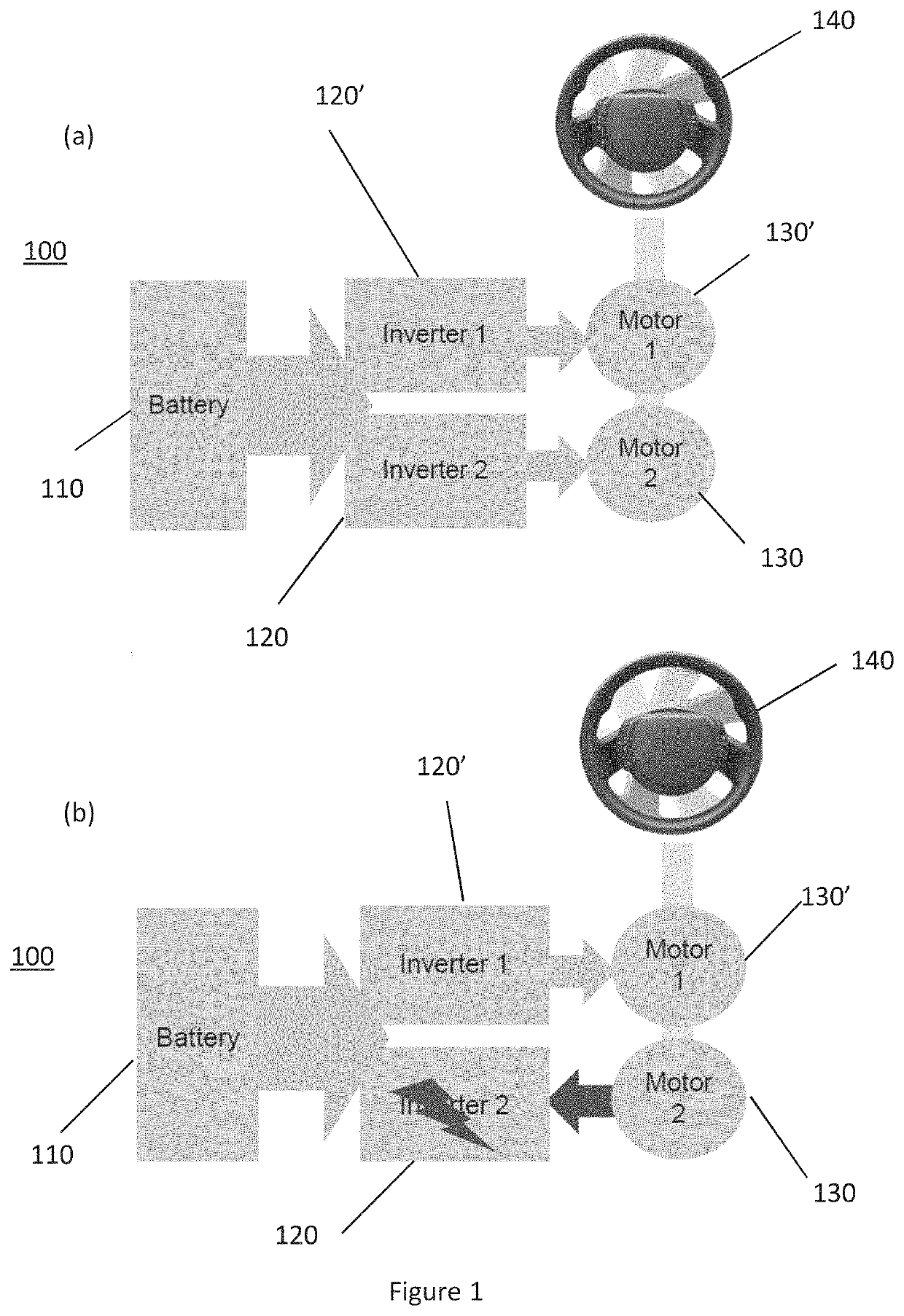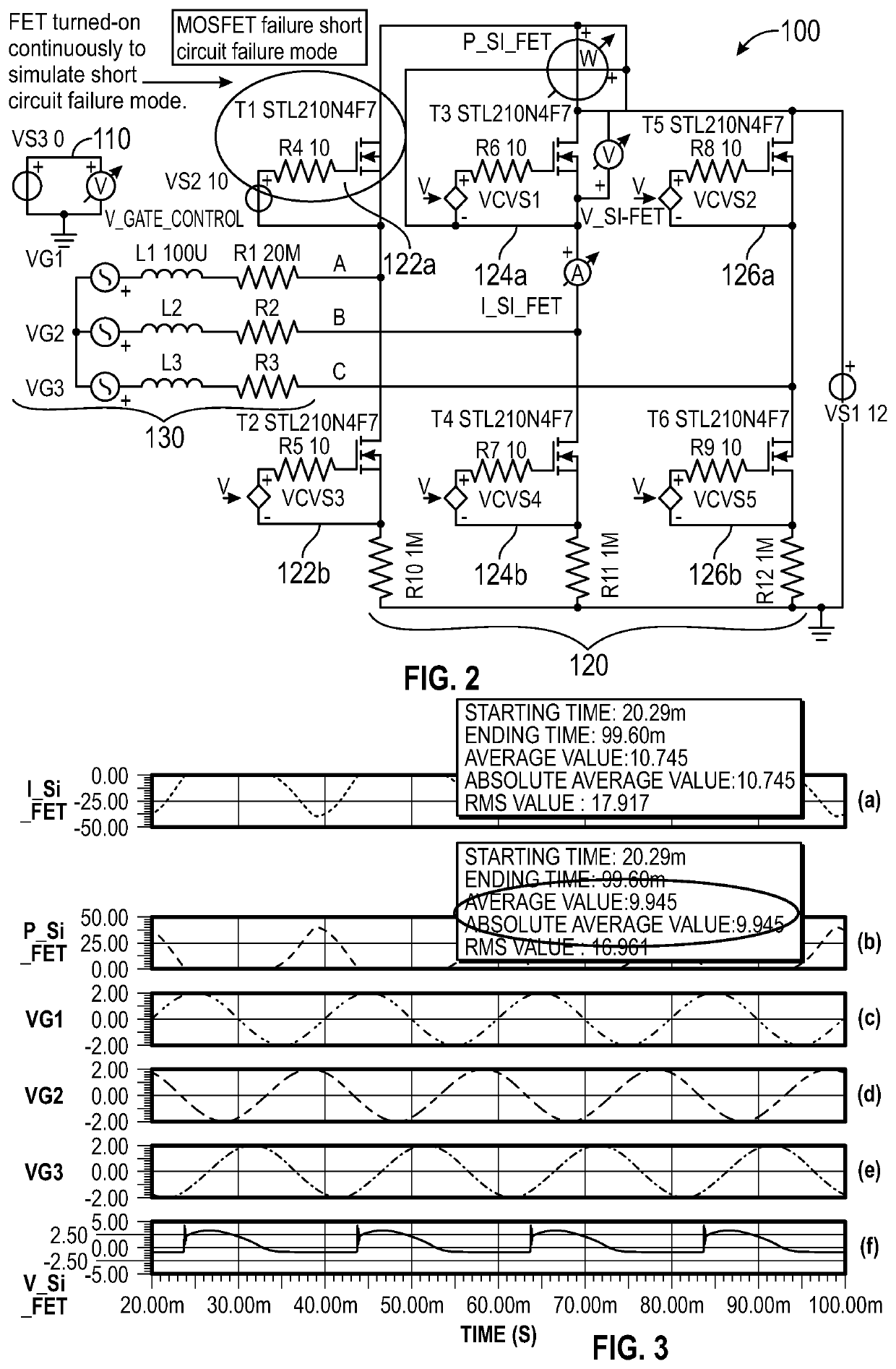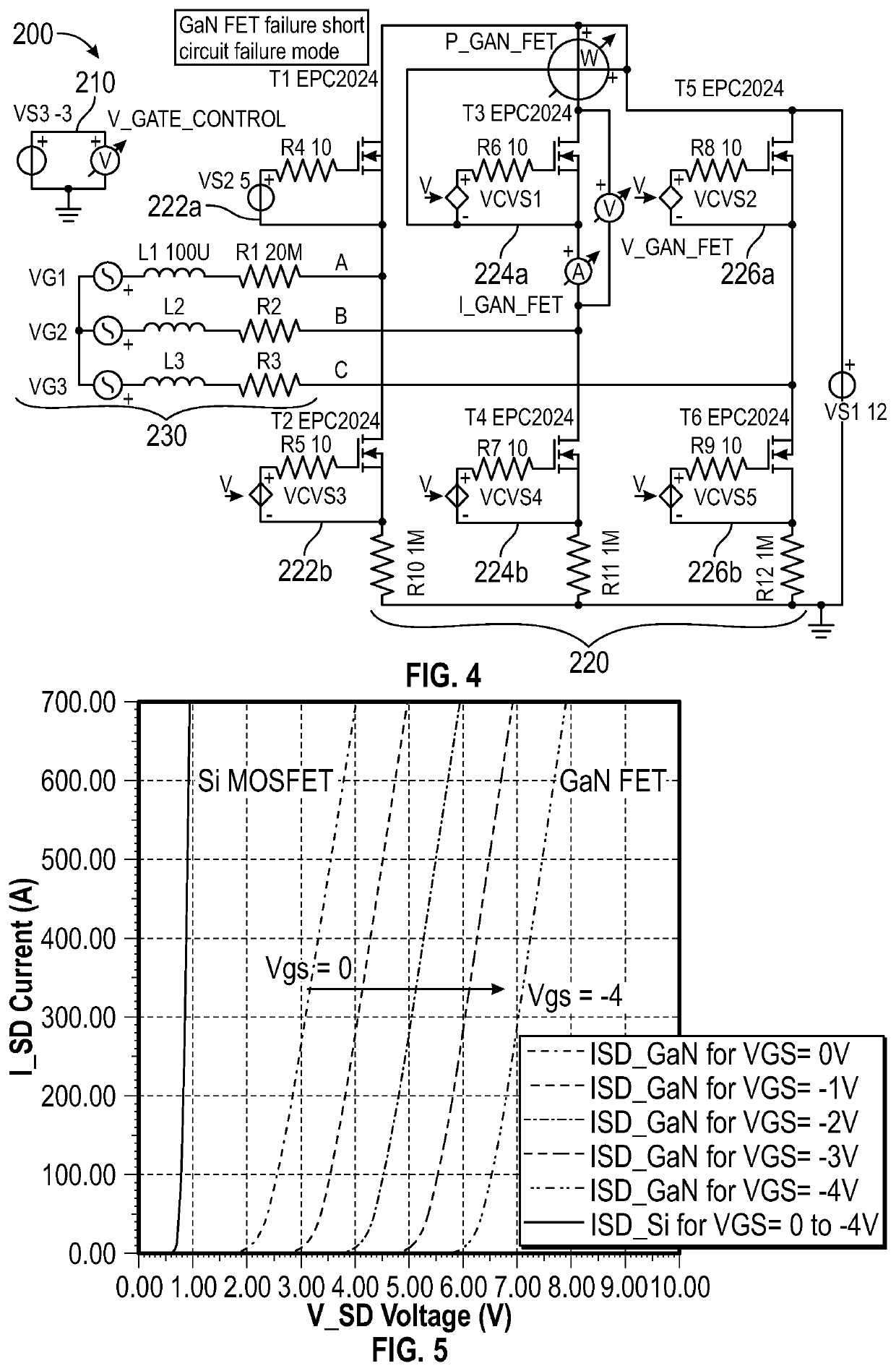Control for electric power steering
a technology of electric power steering and control system, which is applied in electrical steering, torque ripple control, transportation and packaging, etc., can solve the problems of reducing the amount of assistance available to the driver, further failure of the eps system, and useful function, so as to prevent, dampen current, or suppress the effect of curren
- Summary
- Abstract
- Description
- Claims
- Application Information
AI Technical Summary
Benefits of technology
Problems solved by technology
Method used
Image
Examples
Embodiment Construction
[0079]FIGS. 1(a) and (b) represent a known dual-bridge EPS control system 100. The system comprises first 120 and second 120′ inverter bridges connected to and configured to drive first 130 and second 130′ motors, respectively. When the steering wheel 140 of a vehicle (not shown) is operated by a driver, a demand torque is detected by the system. The motors 130, 130′ generate an assistance torque, dependent on the demand torque and vehicle speed, which acts on the steering rack to assist steering the vehicle. The two motors 130, 130′ may be physically located in one housing or separately but, in either case, they act on the same steering rack and, in normal operation, each contribute approximately 50% of the steering power. The motors 130, 130′ may conveniently be brushless 3-phase AC permanent magnet synchronous (PMSM) motors.
[0080]FIG. 2 shows a known circuit arrangement of an inverter bridge 120 used to drive a 3-phase motor 130, representing one half of the dual-bridge EPS contr...
PUM
 Login to View More
Login to View More Abstract
Description
Claims
Application Information
 Login to View More
Login to View More - R&D
- Intellectual Property
- Life Sciences
- Materials
- Tech Scout
- Unparalleled Data Quality
- Higher Quality Content
- 60% Fewer Hallucinations
Browse by: Latest US Patents, China's latest patents, Technical Efficacy Thesaurus, Application Domain, Technology Topic, Popular Technical Reports.
© 2025 PatSnap. All rights reserved.Legal|Privacy policy|Modern Slavery Act Transparency Statement|Sitemap|About US| Contact US: help@patsnap.com



